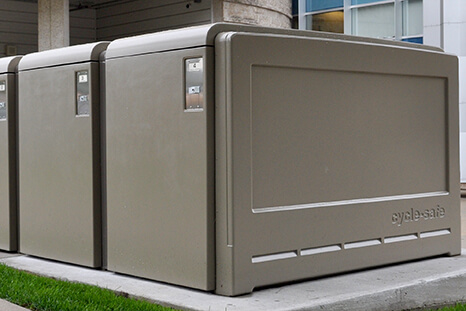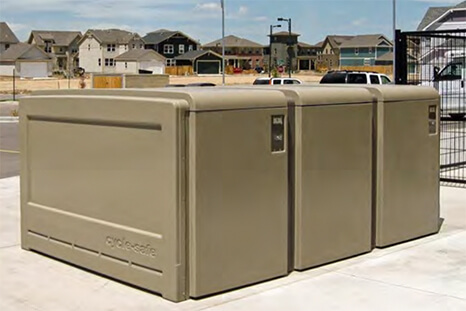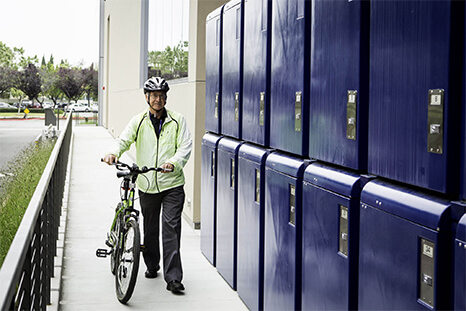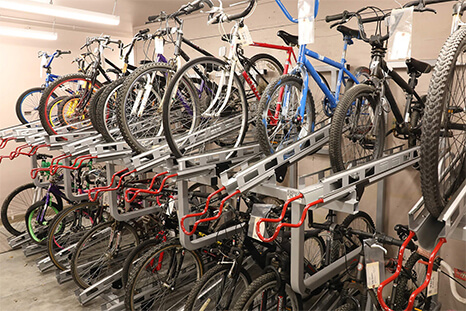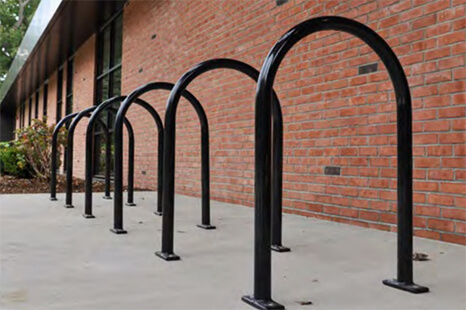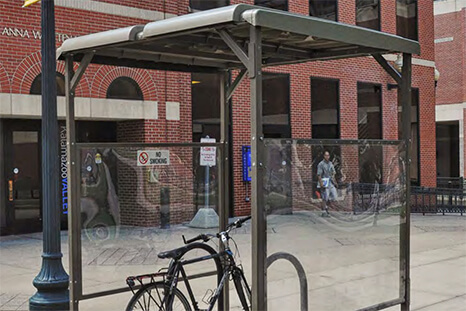Bike Parking Regulations for Eugene, OR
In Eugene, OR, bicycle parking regulations are designed to provide safe and convenient parking for both short-term and long-term use, encouraging alternative transportation modes. These regulations specify different requirements based on the type of development and the duration for which parking is needed.
Long-Term and Short-Term Parking Requirements
Eugene has distinct requirements for long-term and short-term bicycle parking, both of which serve different purposes.
Long-Term Parking Requirements
- Must be located in a well-lit, secure location.
- Must be sheltered from precipitation and close to a main entrance.
- Secure storage options include bicycle lockers, lockable enclosures, or a lockable room with racks.
- Spaces must be at least 6 feet long and 2 feet wide, with a 5-foot access aisle .
Short-Term Parking Requirements
- Must be located within a convenient distance of and visible from the main entrance, no farther than the closest automobile parking space.
- At least 50% of short-term spaces must be sheltered if more than 11 spaces are required.
- Bicycle racks must support the bicycle frame and allow both the frame and wheels to be secured with the user’s own lock.
Design Standards for Bicycle Parking
The design standards ensure that both long-term and short-term parking meet the needs of cyclists in terms of security and accessibility.
Long-Term Parking Design Standards
- Dimensions: Minimum space size of 6 feet in length and 2 feet in width, with overhead clearance of at least 7 feet.
- Security: Must include a fixed structure that supports the bicycle without damaging it and allows the frame and wheels to be locked.
- Weather Protection: Must be sheltered to protect bicycles from the elements.
- Surface and Anchoring: The parking surface must be hard-surfaced (e.g., concrete or asphalt) and all racks or lockers must be securely anchored .
Short-Term Parking Design Standards
- Dimensions: Racks must be placed at least 5 feet apart for maneuverability.
- Visibility and Access: Located at the same grade as the sidewalk and close to the building entrance.
- Shelters: Requirements for shelters vary based on the number of spaces. For example, if a facility requires more than 10 spaces, 50% of them must be sheltered.
Table of Required Bicycle Parking Spaces by Facility Type
| Facility Type | Required Parking Spaces | Parking Type and % |
|---|---|---|
| Residential (multifamily) | 1 per dwelling | 100% long-term |
| Office | 1 space per 3,000 sq. ft. | 25% long-term, 75% short-term |
| Convenience Store | 1 space per 3,000 sq. ft. | 25% long-term, 75% short-term |
| Restaurants/Retail/Commercial | 1 space per 600 sq. ft. | 25% long-term, 75% short-term |
| Schools (K-12) | 1 per 8 students | 25% long-term, 75% short-term |
| University or College | 1 per 5 students | 25% long-term, 75% short-term |
| Manufacturing | 1 space per 3,000 sq. ft. | 75% long-term, 25% short-term |
Required Sheltered Bicycle Parking Spaces
| Short-term Bicycle Parking Requirement | Percentage of Sheltered Spaces |
|---|---|
| 5 or fewer | No shelter required |
| 6 to 10 | 100 % of spaces sheltered |
| 11 to 29 | 50 % of spaces sheltered |
| 30 or more | 25 % of spaces sheltered |
The above information represents a partial list of the facility types and their bike parking requirements for Eugene, OR. Please refer to the links below for more detailed information.
Showers and Personal Lockers
For larger commercial buildings, especially offices, showers and personal lockers are often recommended to encourage bicycle commuting. While not universally mandated, buildings exceeding certain thresholds are encouraged to provide one shower for every 10-20 long-term bike parking spaces, along with locker facilities for cyclists.
Regional or Neighborhood-Specific Requirements
Certain neighborhoods, especially central urban areas, may have more flexible requirements to accommodate increased demand or space limitations. Public bike racks in the right-of-way do not count towards the required short-term bike parking but may be available in densely populated or high-traffic areas.

